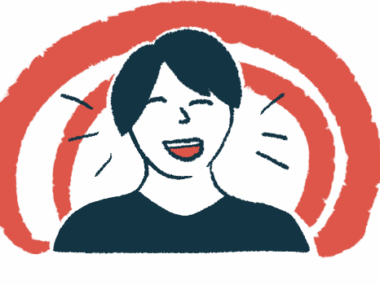Voice Therapy Eased Hoarseness in 4 EDS Patients: Case Report
2 ‘heavy voice users’ included singers, while 2 used their voice in their jobs
Written by |

Some people with Ehlers-Danlos syndrome (EDS) may experience dysphonia, or a hoarse voice, as a consequence of their disease, but symptoms seem to improve with voice therapy, according to a report of four cases in the U.S.
“Voice therapy is a low-risk and potentially beneficial treatment in this patient population,” they wrote.
The report, “Laryngeal Manifestations of Ehlers-Danlos Syndrome,” was published in the Journal of Voice.
EDS is a group of genetic disorders in which the connective tissue fails to provide proper support to tissues and organs in the body. This leads to a range of symptoms, with the most common being joint hypermobility (loose joints), stretchy or elastic skin, and weak muscles.
Some reports have noted patients can experience symptoms affecting the larynx (the voice box). However, these symptoms appear to be “sparse and broad with no distinguishable pattern,” the researchers wrote.
To know more about EDS symptoms affecting the voice and how to treat them, a team of researchers in the U.S. looked back at the medical records of all people who visited an otolaryngology (ear nose, and throat) clinic in New Jersey over a 10-year period.
From the medical records, the team identified four patients with a diagnosis of EDS. Two patients were musicians and deemed professional voice users, that is, voice was essential to their jobs. The other two were a lawyer and an administrative assistant who were occupational voice users.
All presented with a hoarse voice (dysphonia). Stroboscopy, an examination that allows doctors to see the vocal cords, revealed vocal hyperfunction, which occurs when the muscles of the larynx work too hard during voice production. Two patients also had breathing problems (dyspnea).
Vocal hyperfunction may happen “due to EDS-related hypermobility of the cricoarytenoid joint or fragility of the superficial lamina propria,” the researchers wrote. The cricoarytenoid joint controls the movement of the vocal cords, and the superficial lamina propria is a thin layer of connective tissue that lines the organs in the body.
All were referred for voice therapy and received 2-10 sessions focused on education, vocal care, resonant voice techniques, and breathing exercises. Within a few sessions, their dysphonia and dyspnea had improved.
The patients involved in voice therapy
The first case was a 21-year-old woman with a history of Sjögren’s syndrome, an autoimmune disease that mostly affects the salivary and tear glands. She was a professional singer and also gave singing and piano lessons. She visited the clinic with complains of an “airy” voice that “breaks.”
Stroboscopy revealed nodules on the vocal cords and findings that suggested reflux of stomach acid into the throat. She took steroids and an anti-reflux medication and engaged in four sessions of voice therapy after which her dysphonia improved.
About three years later, she started experiencing problems with her joints and underwent genetic testing. Based on the results of the genetic test, she was diagnosed with hypermobile EDS, the most common type of EDS.
The second case was a 22-year-old man with hypermobile EDS. He was a performing artist, recording artist, and songwriter who started experiencing a hoarse voice after he began singing full-time.
The patient engaged in two sessions of voice therapy after which he was lost to follow-up. However, he reported “increased awareness and regulation of his voice,” the researchers wrote.
The other cases were those of two women in their 30s. Besides a hoarse voice, they also had difficulty breathing.
“There are moments where my voice does get hoarse. There are moments where it feels tight, where I feel like I have to keep gulping or swallowing. When it does feel tight, there are moments where I have to relax it. It’s difficult to breathe,” one of the women said.
Both women underwent voice therapy after which their dysphonia and dyspnea improved.
“It is important for health professionals to recognize that patients with EDS can have other manifestations such as dysphonia and inducible laryngeal dysfunction, and that the best-known treatment is voice therapy, which is of low risk and high reward,” the researchers concluded.






